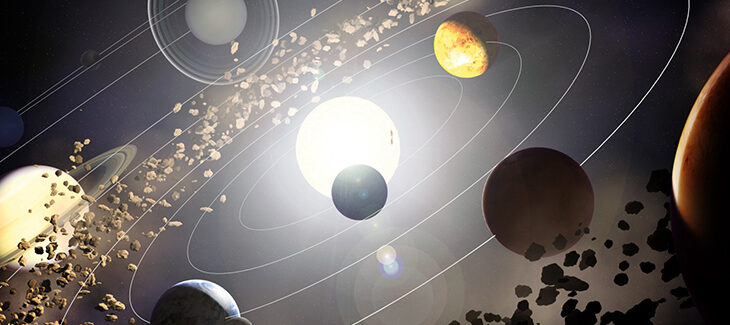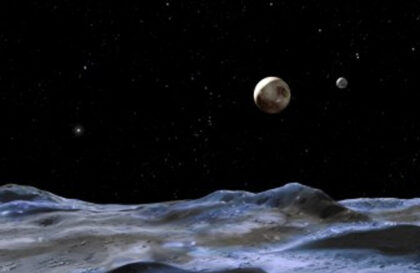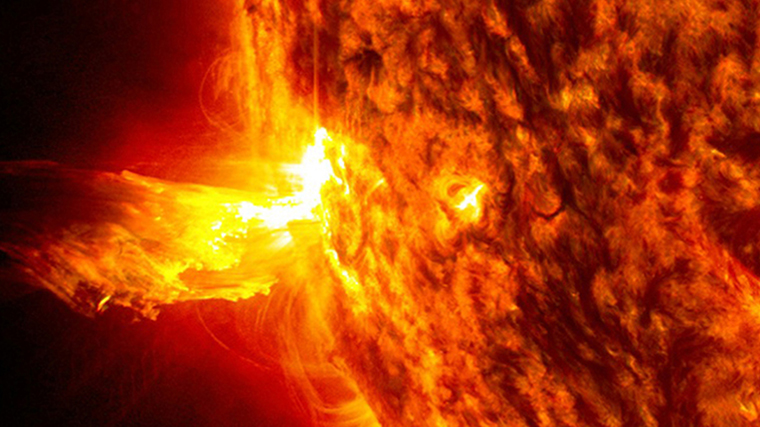The solar system is located in the outer spiral arm of our galaxy – the arm of the Cygnus Orion or Orion’s bridge, or the spur of Orion.
The solar system formed about 4.6 billion years ago when an interstellar molecular cloud of dust and gas collapsed due to a shock wave caused by the exploding star Mova. When the cloud collapsed, it formed the solar nebula, which is a large rotating disk.
At the center of this swirling, spinning disc is a huge gravitational energy that creates pressure – hydrogen atoms collide together to form helium, which creates a lot of energy, which formed the Sun.
In other parts of the disk, the particles are large enough to have their gravity. They took the form of spheres and became planets and moons. If gravity is not enough, asteroids are formed.
Over 4.6 billion years, the solar system has gone through many changes, much of it formed from spinning disks of gas and dust around their parent planets.
The sun is 99.86% of the mass of the solar system, and its diameter is 1.4 million km (870 thousand miles). The gas giant planets (Jupiter, Saturn, Uranus, and Neptune) make up 99% of the residual mass. The size of the solar system is determined by its heliosphere = approximately 100 AU. It is 4 times farther than Pluto. Beyond the heliopause, interstellar space begins.
The sun is hot, the surface has a temperature of 6,000 K – an atmosphere of 100,000 K is equivalent to 180,000 F. Because of this, you can see the “Corona” around the Moon during a solar eclipse. In the corona, the temperature is over 2 million kelvins.
According to NASA, the Sun moves around the center of the galaxy at a speed of 828,000 km/h (230 km/s), which is approximately equal to 1/1300 of the speed of light, at a distance of 8.5 kiloparsecs (2.62⋅1017 km, or 27,700 light years). ). In one minute, the solar system covers the distance from New York, USA to Beijing, China.
Banner image: There are so many interesting solar system facts, here are some of our favorites.
Image credit:
PeteDraper via Getty Images






